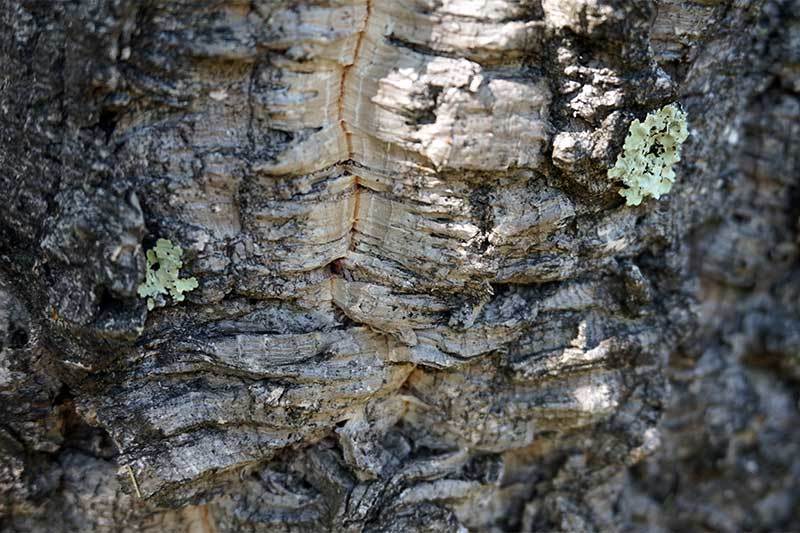This tree in front of you, with a rough stalk made of cork is the cork oak, another species closely related to the oak and the Pyrenean oak (although its leaves are not alike too much). In this case belongs to the species Quercus suber and its scientific name refers to the cork that forms in its bark (suber, in Latin, means cork). The leaves are slightly different from those of their relatives, the oaks, in the Atlantic forest: smaller and coriaceous, adapted to life in dry environments and with high temperatures.
Did you know that the cork presents a resistance to the passage of the heat thirty times superior to the one of the concrete?
Cork is the plant tissue that covers the trunk and has originated naturally in this species as an adaptation to the fires that occur frequently in Mediterranean environments (where this species lives), with very dry summers. Thanks to the fire-resistant characteristics of this bark, these trees increase their survival. That is why it is said that it is a biological adaptation.
Due to the characteristics of its leaves and the bark, we can already deduce that this species of tree is adapted to warmer climates and with more periods of drought, like the Mediterranean ones. Here, where you see, it is in one of the most northern points of its range. However, its abundance is also closely related to human activity. Due to the incomparable qualities of the cork that is obtained from its bark and the resistance that these trees have to fire, this species has been widely used and cultivated by humans. Although few individuals remain here, this tree was very abundant around the castle. From it this place took the name of "Sobroso".
